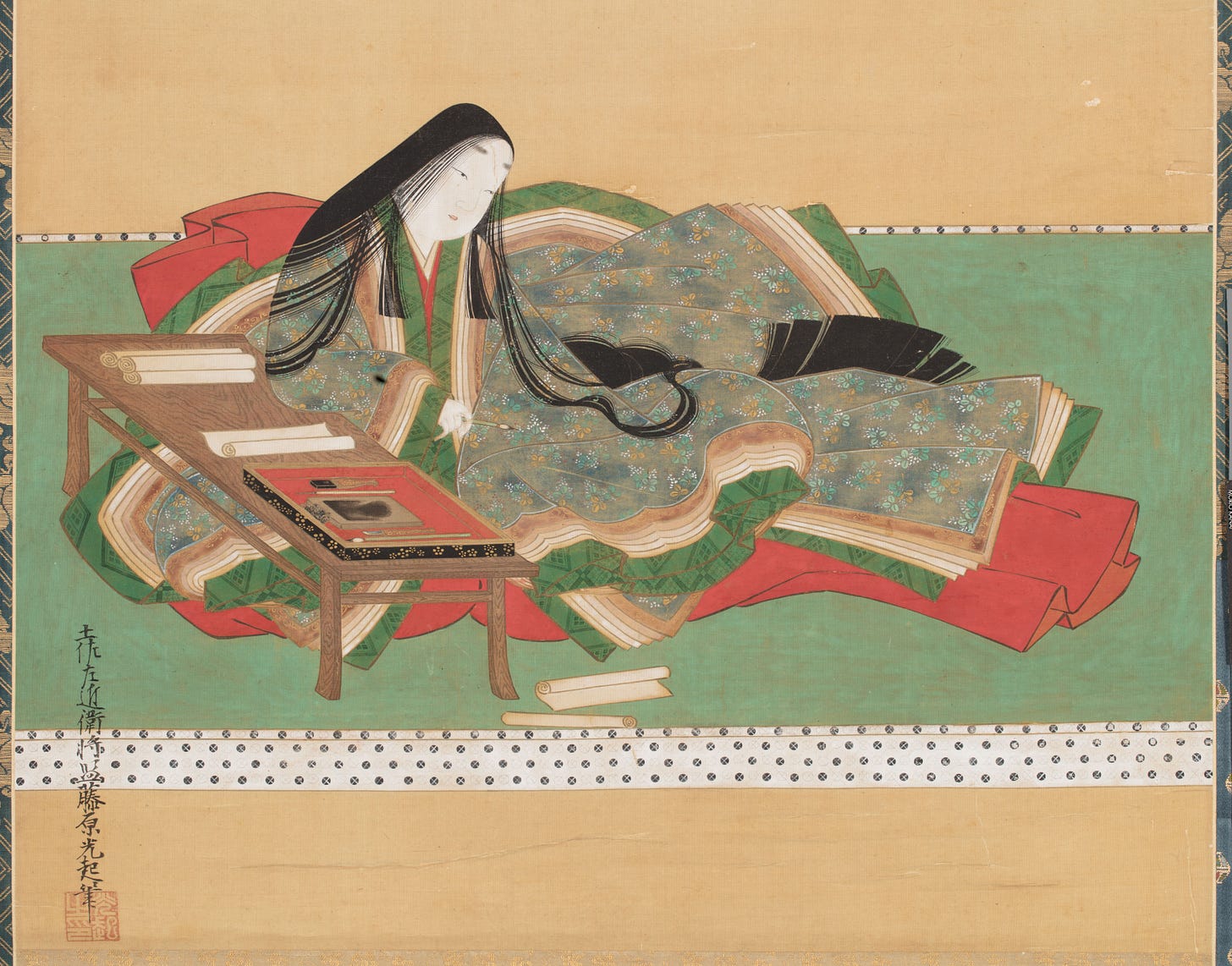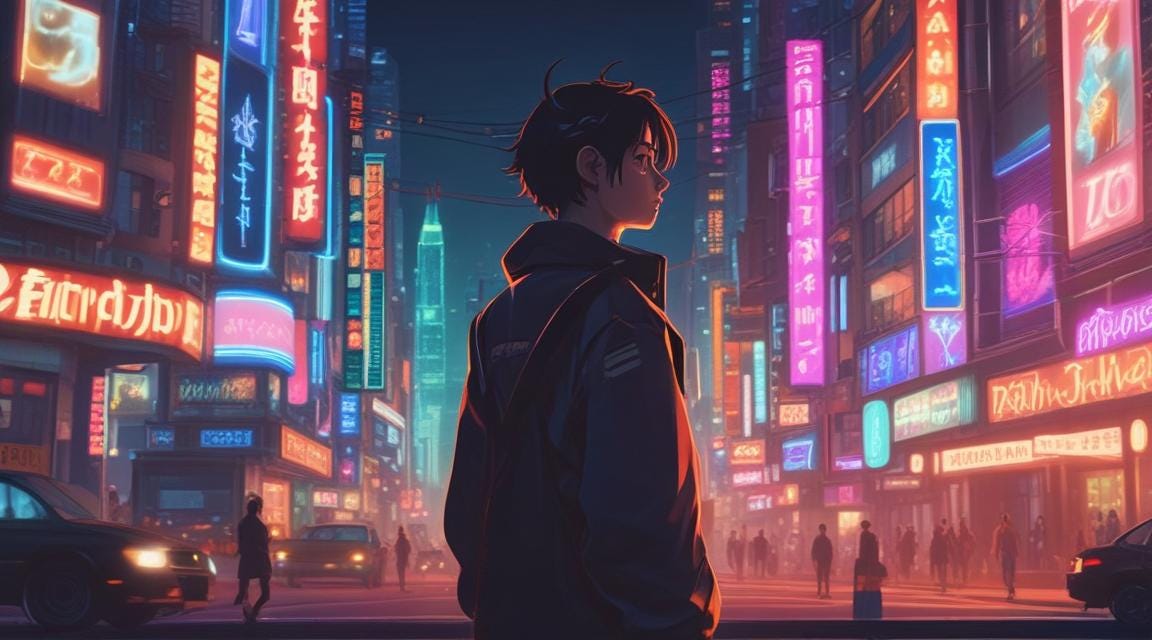Why Does Japan Have 3 Unique Writing Systems?
Discover the differences between Hiragana, Katakana and Kanji.
You’ve just decided you want to learn Japanese.
Your pumped up and adrenaline is riding high.
You think with a bit of study you’ll be reading the original versions of Norwegian Wood or One Piece in no time!
So, you open the text book.
Wait, why does the writing look like a 10th grader downed 3 cans of Monster energy and went cray-cray with the font packs in Canva?
Why is this one cursive?
And this one sans serif?
Hang on, isn’t this one a Chinese character?
It can be overwhelming when you first start learning to read Japanese. As an English speaker too, I also struggled at first.
And I won’t lie to you.
Learning Japanese is really f*cking hard.
Unlike pretty much any other country on Earth, Japan had to go and build itself a language that uses 3 different writing scripts in order to comprehend what’s actually going on in a sentence.
Good one Japan.
But the thing is once you understand the back story behind how these scripts came to be, you begin to appreciate their beauty, rather than [solely] cursing them for making your life harder.
Notice me Senpai!
Honestly, if it was today (and not the 5th century CE) that Japan decided to adopt Kanji as their writing system well, we’d all be trolling their X feed with Notice Me Senpai memes.
Japan’s infatuation with the Middle Kingdom began long before this, but their biggest copy paste onto the culture was definitely the introduction of the Chinese writing system.
Before Japan had Kanji, the country was quite illiterate. Scholars have only cave drawings, some burial mounds, piles of broken pottery, and outside observations to go by.
But after Kanji popped up, all of a sudden they had a Japanese perspective to refer to.
But Kanji had a flaw.
It’s not Japanese.
Japan simply took Chinese symbols and applied them to Japanese.
At first it was only Buddhist monks and the upper elite that learned Kanji.
But it was quickly adopted far and wide.
And each region kinda did it differently to the one next door.
Plus, every time we went back to say G’day to our mates on the mainland, there had been another uprising - so the throne and official language had changed with it.
The characters stayed the same but the pronunciation was different.
Japan’s solution: Shit better add those too…
Oh, and while we are at it - let’s add our own sounds too.
So now we have the Chinese readings: On-yomi
and the Japanese readings: Kun-yomi
It’s a big reason why anyone learning Japanese finds this part so damn hard.
There are SO many readings for one single Kanji.
Japanese Kanji are just ancient Emojis
Take a look at the character 上 for example:
If you count them all you can see why everyone struggles?
1 Kanji.
18 different readings.
Even native speakers struggle with Kanji.
Each character has more than one reading and more than one meaning.
Think of them as ancient emojis.
🍆 doesn’t just mean eggplant anymore, we gave it new meaning through repetition of use in another context.
That’s what happened with Kanji over the centuries.
But let’s not (ノ`□´)ノ⌒┻━┻ just yet.
I have good news.
Even though there are over 8,000 (yes you read that right) Kanji in Japanese, you’ll only need to learn around 2,000 of them to actually be able to master the essentials.
This is equivalent to what that 16 year old finishes up 10th grade with.
Are you smarter than a 10th grader?
I believe you are.
A bridge, a border and a set of chopsticks
Kanji are logo-graphic characters. They are an image that represents an idea.
Many Japanese words sound exactly the same.
Kanji is how we tell words apart.
They give us context.
For example:
This is hashi: 橋
And this is hashi:端
And this too is also hashi:箸
Without the Kanji can you tell which one is bridge, which one is border and, which one means chopsticks?
Nope.
That’s why Kanji are impeccably useful.
But, learning to read and write all of them was (and still is) a lifetime’s amount of work.
But sometimes, you just wanted to be able to converse quickly or express yourself without needing a massive tome of a dictionary on hand.
It was a frustrating grind.
By the end of the 7th century, however, Japan began painting with a new brush, and it looked good alongside a kimono.
It takes a woman to fix a man’s mess
Hiragana was born out of the frustrations of Japanese women.
The once equal footing Japanese women had once held throughout the course of ancient Japanese history had shifted towards an exclusively male dominated society (*Another example of Chinese influence over early Japan).
Sons were taught how to read and write. Daughters on the other hand didn’t really need that in order to do their job.
Only a select few were given the time and freedom to learn to read and write.
The women in the imperial court.
Life at court was even more boring than a day spent watching cricket. Drying paint even rates higher.
Women had nothing to do but sit around all day and wait to be summoned to the Emperor’s bed chamber.
When you have 20 women in a room with nothing to do, it can get very bitchy, very quickly, so you know the Emperor spent big bucks keeping his women entertained.
Fortunately, one of them piped up and said “I wanna learn to read, bruh” otherwise Japan would never have invented Hiragana.
She’s a curvy girl
Hiragana unlike Kanji does not convey meanings.
Those 7th century women decided to opt for a much more practical and easier concept to grasp.
Hiragana is the individual sounds of Japanese in written form.
A single character like; あ、い、う、え、お represents a sound, much like our own English ABCs.
Unlike Kanji, Hiragana was much simpler to learn. Originally it was seen as a script purely for women’s use. But as Japan shifted towards independence and lessen the mainland’s influence, the quicker the men caught on to it’s practicality.
Eventually Hiragana and Kanji were incorporated into a single writing system.
Hiragana today is used for some purely Japanese words and for various grammatical functions such as conjugations of verbs, etc.
Hiragana provides a separation between meanings in the language.
You can tell it’s a Hiragana because they are curvy and round. She’s a curvy girl: she lift’s heavy and those curves have been sculpted in all the right places.
I gotta give props to that Emperor for being a Chad and booking a tutor for his girlfriends. Otherwise the world’s first novel and backbone of Japanese literature - The Tale of Genji, would not exist.
Want help learning Japanese? I offer Japanese tutoring classes for beginners.
F*cking Gaijin, how we gonna spell that?!
What if I want to write words that don’t exist in Japanese?
This was the exact problem 16th century Japan faced when the Portuguese showed up on their doorstep spouting stories about a magical zombie that fights to save souls from four evil villains on horse back that can shoot fire out their assholes.
Sounds like a story that would run in Shonen Jump.
Bible verses aside, the Dutch also rocked up around the same time wanting to sell us all this new technology and build Windmills all over the place…
What is a windmill, anyway?
And, how do I spell it?
Japan needed a way to deal with all this foreign stuff fast. The country had just got it’s shit together: big rebellion, lot’s of fighting,you know all that Warring States stuff…
Katakana is the script used to write foreign words (as well as onomatopoeia or to add emphasis -like for advertising purposes) and even though these characters share a purpose with Hiragana, in that they represent a sound in the phonetic alphabet.
Katakana are rough and sharp, like how Japan described foreigners, and their use kinda fell flat in the beginning.
Katakana didn’t fit the Bushido vibe.
Why? because, the new Shogun Tokugawa Ieyasu first said out loud what every citizen was thinking:
Do we really want to deal with all this foreign crap now?
Short answer, nope, they didn’t.
So, Japan closed it’s borders and isolated itself for 200 years.
And in typical Japan fashion,
They slammed it shut but got their finger caught in the door
When they could no longer hide away from the world, everything had changed.
Japan who had once climbed to the heights of civilization on the world scale, was now a primitive society once more.
Japan didn’t like that.
Japan needed to adapt suuuuper fast to the modern world, they couldn’t take their time to invent a new word in Japanese for everything and let it catch on with each new foreign thing.
Japan could only take the foreign name and run with it.
So they spelled the word out as best they could using the sounds in Japanese.
Japanglify it and then use Katakana when you write it in a sentence.
Only, just don’t count on them all being English words.
The Meiji emperor sent many Japanese overseas to learn from Western countries that were the best in a particular field.
So, expect those foreign words to come from:
English
Dutch
German
Portuguese
Spanish
French
Italian
The Meiji government also made schooling mandatory for all children and every citizen needed to know how to read and write Japanese too.
Under the Meiji Emperor Japanese became “simplified” into the Japanese we know today. And the 3 writing scripts were given rules and regulations that we still follow too.
Kanji for showcasing meanings and sounds, Hiragana for grammatical particulars as well as Japanese native spellings, and Katakana for all the foreign stuff that wouldn’t fit into the other two.
Simple is hardly the word, but it’s what we’ve got.
It’s Japanese, and unless you are Japanese you really can’t do anything more than just shut up and learn it.
And if you are Japanese, then, well you did it to yourself.
しょうがない
So, now that you know all about the 3 writing scripts and how they came to be, are you feeling a little less frustrated with your choice to learn Japanese?
Yeah, probably not.
But that’s all part of the fun.
Your journey to Japanese mastery will be long and full of adventures but stick with it.
You’ll be reading those Murakami novels in no time.
I believe in you.
Until next time,
👉🏻 I’ve struggled in the past with keeping myself accountable and taking action towards my goals. But then I found a way to make taking action easy for my PlayStation addicted gamer brain. If you want my system to gamify your life, I’ve created a notion template to track your world like in an MMORPG, use it and you’ll be clearing quests in no time.
👉🏻 Mellowmorphia is free but if you enjoyed this post and want to show your support you can always buy me a coffee.
👉🏻 Want help learning Japanese? I offer Japanese tutoring classes for beginners.







